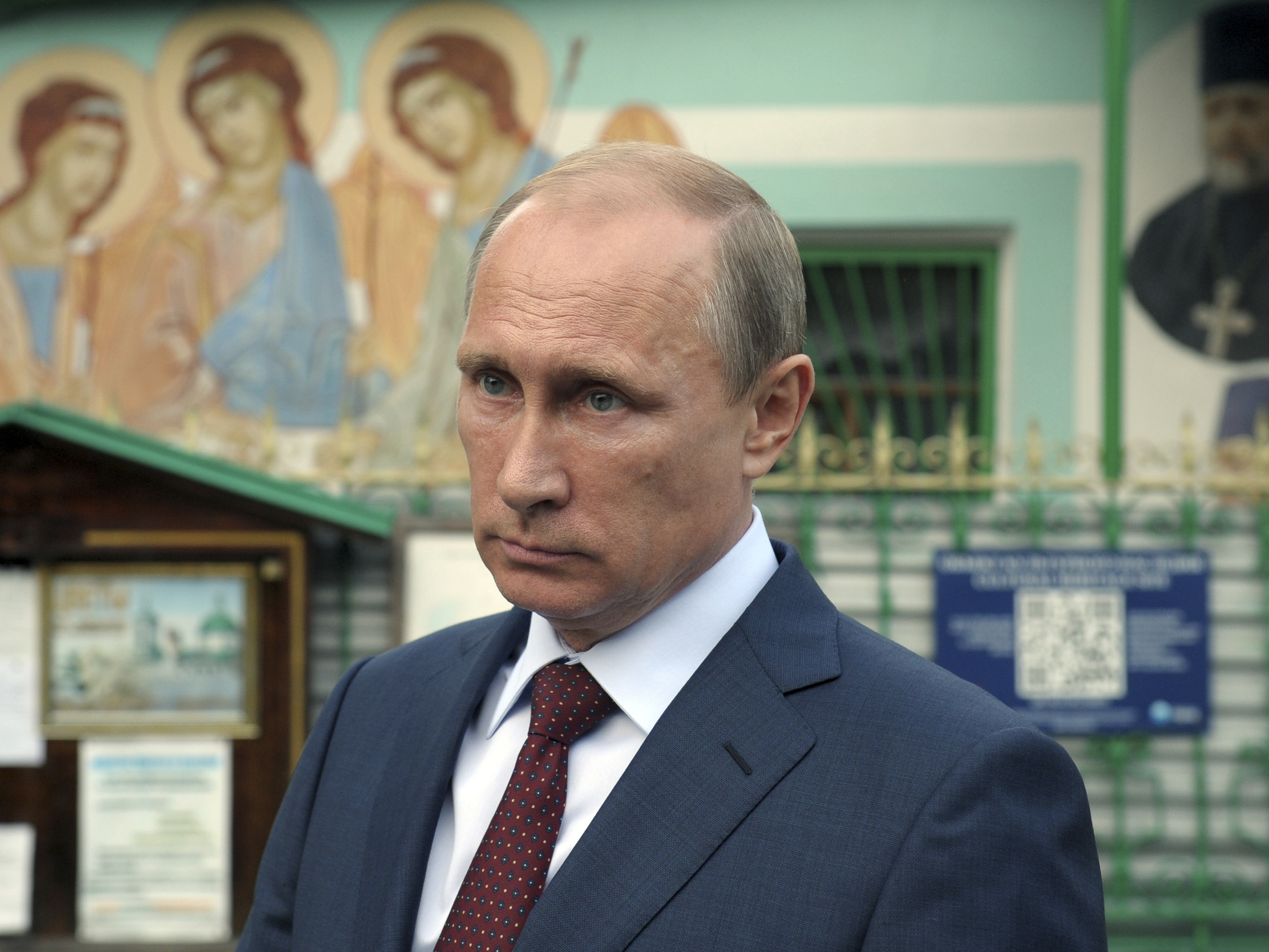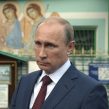
Kremlin Sees Ukraine Crisis as Part of Overall US-Led Assault on Russia
Publication: Eurasia Daily Monitor Volume: 11 Issue: 159
By:

The ceasefire agreement signed in Minsk, on September 5, by representatives of Ukraine, Russia and Moscow-backed rebels operating in Ukraine’s Donbas region (area including Luhansk and Donetsk provinces) seems to be holding. Yet, serious problems of implementation persist among the different parties to the somewhat vague twelve-point ceasefire protocol. Nevertheless, both Kyiv and Moscow evidently want the agreement to hold for now.
Ukrainian President Petro Poroshenko and most other mainstream Ukrainian political leaders have announced plans to mobilize their defense industry to produce more armor and weapons, and to rapidly reform and modernize their armed forces with possible Western aid (Golos Ukraini, September 11). Understandably, these plans need a ceasefire to be realized.
Russian President Vladimir Putin, on the other hand, appears keen to scale down the direct involvement of regular Russian troops in Donbas and possibly withdraw most of them to Russian territory. He likely hopes to avoid further casualties and possibly to maintain Moscow’s official pretense that Russian troops are not involved in the fighting in eastern Ukraine. A massive, open deployment of Russian combat troops to southeastern Ukraine would be unpopular with many Russians and could prompt the West to impose more severe punitive sanctions. According to Poroshenko, as of September 10, “Ukrainian military intelligence reported [that] some 70 percent of Russian troops […] have withdrawn across the border.” The exact number of Russian regular combat troops that invaded Ukraine, beginning August 24, to support the Donbas rebels, has not been officially estimated (Segodnya, September 10).
The Russia-backed rebel forces in Donbas that call themselves “the People’s Republics of Donetsk and Luhansk” or “Novorossiya” (New Russia) are unhappy with the Minsk ceasefire protocol, which grants them de facto control of less than 40 percent of the territory of Donetsk and Luhansk oblasts. Furthermore, the Minsk agreement promises only a special autonomy regime, while they continue to insist on full sovereignty over all of Donbas (Interfax, September 10). But without Russian regular troops spearheading any future assaults, the rebels do not seem capable of performing any effective offensive military action, despite possessing large amounts of armor and heavy guns, mostly originating from Russia. After Russian regular forces massively intervened on August 24, and decimated the entire Ukrainian joint-force operational group “South” in and around Ilovaysk, southeast of Donetsk, the rebels have not been able—despite repeated assault attempts—to push the Ukrainians out of the international airport in the suburbs of Donetsk (see EDM, September 4). Until some point in the future, the rebels will be apparently compelled to do what the Kremlin demands verbatim, and keep to the ceasefire, whether they like it or not. Of course, the rebels will most likely use the ceasefire to rearm and reorganize their forces with Russian help. To publicly underline his determination to continue to support the rebel cause, Putin told journalists outside an Orthodox church in Moscow: “I lit candles to commemorate those who were injured or killed defending the people of Novorossiya” (rbc.ru, September 10).
The main warring parties in the conflict each want the present ceasefire in Donbas to hold for differing reasons. Under these conditions, the ceasefire could be maintained for months or even years. But there are problems with the agreement’s implementation, verification and interpretation. In particular, there is a total lack of mutual trust among the parties and, most importantly, the underlying cause of the conflict is not actually being addressed. The Ukrainian crisis is seen in the Kremlin as part of an overall sinister, Washington-led, Western anti-Russian plot aimed at undermining Putin and his regime. Consequently, the Ukrainian crisis may continue, by proxy, for as long as the new East-West conflict lasts. Speaking in the Kremlin this week, at a meeting to prepare a new national armament procurement program from 2016 to 2025, Putin announced that Russia is under a growing multitude of outside threats emanating from the United States and its allies—Ukraine being one of them. According to Putin, the West “organized and provoked” the present Ukrainian crisis in order to have an excuse to “reinvigorate NATO [the North Atlantic Treaty Organization]” and deploy Western forces close to Russia’s borders. Due to these threats, “Russian security must be guaranteed absolutely,” announced Putin. Russia will respond by developing and deploying new offensive nuclear weapons aimed at Western nations, working to form an air and missile defense system, producing new precision-guided weapons, as well as building new bombers and other modern weapons. Putin’s message to the West: “Do not become hysterical when these deployments begin”—Russia is acting merely in response; its posture is purely defensive (kremlin.ru, September 10).
Putin announced that a revised military doctrine (see EDM, September 9) will be prepared by year’s end, taking into account these new threats. Furthermore, the existing government Military Industrial Commission, which was previously headed by Deputy Prime Minister Dmitry Rogozin, will now be upgraded with Putin as the new chairman and Rogozin as his deputy. The reinforced commission will mobilize and coordinate the efforts of the entire nation to speedily push forward the rearmament of Russia and overcome risks posed by Western sanctions and plots. Putin once again announced the main goal: total Russian defense self-sufficiency or import replacement (“importozamescheniye”). According to the president, “The Russian defense industry must, on its own, create all the technologies and equipment, [and] produce all the components and materials” to make all the modern weapons Russia needs to deter the West (kremlin.ru, September 10).
Russian troops in the western half of the country have remained almost permanently on a war footing since last February. Moscow has been mobilizing and deploying combat-ready troops in Crimea and on the Ukrainian border. This week, a mobilization of over 100,000 men was announced in the Russian Far East in a new massive snap inspection of the troops’ combat readiness and officially promoted as a direct war exercise to prepare Russia for an enemy attack from the sea, air and land. Militarized and civilian federal departments outside the defense ministry as well as local governments will be joining these war games in a total mobilization of all possible resources. A snap military exercise was already carried out in the Far East this past August, but this one is much more massive (RIA Novosti, September 11). According to a defense ministry–connected source, this Cold War–style massive military exercise “marks the beginning of a new epoch of military-political confrontation between Russia and the West” (RIA Novosti, September 11).




